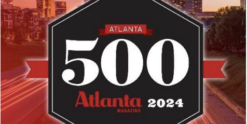Over the past several weeks, I’ve done multiple shows on WSB Radio with Clark Howard and Scott Slade answering questions about the new $2.0 trillion stimulus act to combat the economic impact of the coronavirus, called the CARES Act.
Because this legislation is a colossal 883 pages long, I drafted a 10-person “Money Matters” team to analyze and assess its many provisions, and to help me answer questions around this as people send them in through WesMoss.com. My goal is to help everyone get the most out of CARES, regardless of their current situation.
We can’t cover the entire measure in this column, so I want to focus on three CARES programs that I think are the most important to understand — and are already having the most positive economic impact.
1. Small businesses and “solo-preneurs”
• The CARES Act’s Paycheck Protection Program (PPP) makes loans available for companies with 500 or fewer employees.
• While we often think of small businesses as those with 20, 30 or 50 employees, the vast majority of small businesses in America are individuals with their own shingle. Call them “solo-preneurs” — sole proprietors, 1099 contractors, single-member LLCs and even gig workers. Of the 30 million small businesses in the U.S., 24 million (80%) are in this “non-employee business” category.
• The remaining 20% of small businesses collectively employ just under 30 million people, so roughly 60 million people stand to be positively impacted by the PPP.
• The PPP provides a total of $349 billion in loans for the entire small business industry. These loans are potentially 100% forgivable, and once forgiven are slated to be tax-free. Maximum loan amounts are a generous 2.5 times the business’s average monthly obligations for payroll, rent, utilities and health care. To receive complete loan forgiveness, companies with employees must keep the same number of employees on the payroll during the eight-week period from the origination of the loan. If a business does reduce employee headcount or compensation by more than 25%, the forgivability of the loan will be reduced on a pro-rata basis.
• For solo-preneurs who receive a PPP loan, don’t stop paying yourself. As long as you don’t “fire yourself,” your PPP loan, which is a government-backed SBA vehicle, should be forgivable and tax-free as well.
• In addition to providing immediate relief to small-business employees facing pay cuts or layoffs, the PPP will help minimize disruption once we get back on track. If business owners have to lay off people now, they may struggle to put together a solid team when the economy reboots. That could be a drag on our recovery.
• While the PPP is in place, some 5,000 banks across America are participating in the program and doing their best to process and fund these loans.
• I encourage all business owners and solo-preneurs to ask their banks about obtaining a potentially forgivable and tax-free PPP loan. Reducing layoffs now through this program will speed and ease our eventual economic recovery.
• For a variety of reasons, not every business will be able to access the PPP and other CARES Act programs. As a result, we could see more job losses. We’ve already seen over 16 million jobless claims in recent weeks.
• That’s the bad news. The good news is that CARES provides 16 weeks of enhanced unemployment benefits — an extra $600 per week. So, if your weekly benefit would typically be $300, you’re now eligible for $900 per week.
• In Georgia, the standard maximum benefit is $330. So, unemployed Georgians will now have access to up to $930 a week if they’re unemployed. Also, the rules have been expanded to include benefits for self-employed individuals, independent contractors, freelancers and gig workers who usually would not qualify.
3. Existing retirement assets
• The CARES Act has dramatically relaxed the IRA and 401(k) rules to the benefit of millions of Americans. Retirement accounts in the U.S. currently total more than $20 trillion. Think IRAs, 401(k)s, SEP IRAs, 457 plans and 403(b)s. Traditionally, you’d have to wait until you’re age 59½ to tap most of these accounts. That’s no longer the case for the year 2020, thanks to CARES.
• CARES waives the 10% early withdrawal penalty if you make a withdrawal before the traditional age limit.
• It also allows individuals who make withdrawals to spread the tax liability over the next three years.
• And it lets you put the distributions back within three years to avoid Uncle Sam’s bite.
• CARES also allows owners of existing 401(k) accounts to borrow up to $100,000 from those accounts. That’s twice the normal limit.
As I have said from the outset of this crisis, Americans, individually and collectively, will step up and guide our economy through these unprecedented times. The CARES Act provides the tools we need to make that happen. As new information and announcements surrounding this bill are released, my team and I are doing our best to share the things you need to pay attention to. Check back on wesmoss.com for more details on the above, to learn the various nuances and rules, to ask questions, and to stay on top of the latest changes.
Read original AJC article here
Covid-19 Disclaimer: This article was released on April 13, 2020. Please be advised that any and all information shared in this article is subject to change. Given the extremely dynamic and rapidly evolving nature of COVID-19, the commentary shared in this video does not take into account any future information, studies, or updates on the impact of coronavirus.
This information is provided to you as a resource for educational purposes only and should not be considered investment advice or recommendation or an endorsement of any particular security. Investing involves risk, including the possible loss of principal. There is no guarantee offered that investment return, yield, or performance will be achieved. There will be periods of performance fluctuations, including periods of negative returns. Past performance is not indicative of future results when considering any investment vehicle. The mention of any specific security should not be inferred as having been successful or responsible for any client achieving their investment goals. Additionally, the mention of any specific security is not to infer investment success of the security or of any portfolio. Past performance is not indicative of future results. A reader may request a list of all recommendations made by Capital Investment Advisors within the immediately preceding period of one year upon written request to Capital Investment Advisors. It is not known whether any client holding the mentioned securities have achieved their investment goals or experienced appreciation of their portfolio. This information is being presented without consideration of the investment objectives, risk tolerance, or financial circumstances of any specific investor and might not be suitable for all investors. This information is not intended to, and should not, form a primary basis for any investment decision that you may make. Always consult your own legal, tax, or investment advisor before making any investment/tax/estate/financial planning considerations or decisions.













